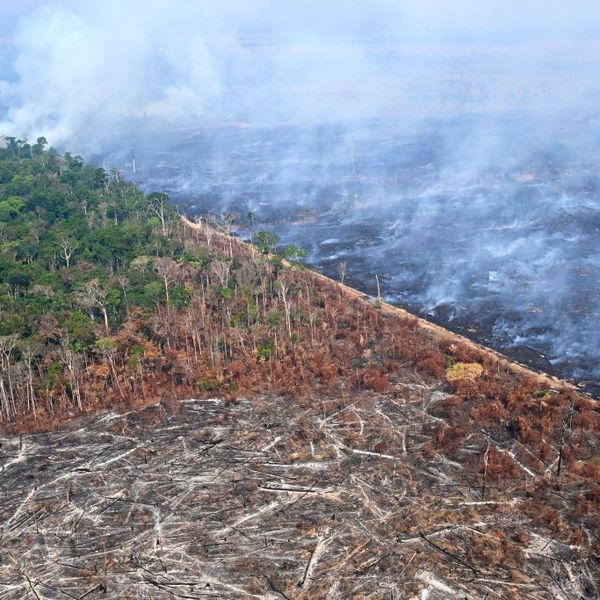Climate change could speed up the large-scale destruction of the Amazon rainforest and bring the "point of no return" much closer than previously thought, conservationists warned today.
Almost 60% of the region's forests could be wiped out or severely damaged by 2030, as a result of climate change and deforestation, according to a report published today by WWF.
The damage could release somewhere between 55.5bn-96.9bn tons of carbon dioxide into the atmosphere from the Amazon's forests and speed up global warming, according to the report, Amazon's Vicious Cycles: Drought and Fire.
Trends in agriculture and livestock expansion, fire, drought and logging could severely damage 55% of the Amazon rainforest by 2030, the report says. And, in turn, climate change could speed up the process of destruction by reducing rainfall by as much as 10% by 2030, damaging an extra 4% of the forests during that time.
By the end of the century, global warming is likely to reduce rainfall by 20% in eastern Amazonia, pushing up temperatures by more than 2C and causing forest fires, the report said.
Destroying almost 60% of tropical rainforest by 2030 would do away with one of the key stabilisers of the global climate system, it warned.
Such damage could have a knock-on effect on rainfall in places such as central America and India, and would also destroy livelihoods for indigenous people and some 80% of habitats for animal species in the region.
The "point of no return", in which extensive degradation of the rainforest occurs and conservation prospects are greatly reduced, is just 15-25 years away - much sooner than some models suggest, the report warns.
Releasing the report at the UN conference in Bali, which aims to begin negotiations on a new international climate change deal, the WWF called for a strategy to reduce emissions from forests and stop deforestation.
Beatrix Richards, the head of forests at WWF-UK, said: "The Amazon is on a knife-edge due to the dual threats of deforestation and climate change.
"Developed countries have a key role to play in throwing a lifeline to forest around the world. At the international negotiations currently underway in Bali governments must agree a process which results in ambitious global emission reduction targets beyond the current phase of Kyoto which ends in 2012.
"Crucially this must include a strategy to reduce emissions from forests and help break the cycle of deforestation."
The report's author, Dan Nepstead, senior scientist at the Woods Hole research centre in Massachusetts, said: "The importance of the Amazon forest for the globe's climate cannot be underplayed.
"It's not only essential for cooling the world's temperature but such a large source of freshwater that it may be enough to influence some of the great ocean currents, and on top of that it's a massive store of carbon."
(c) 2007 The Guardian

